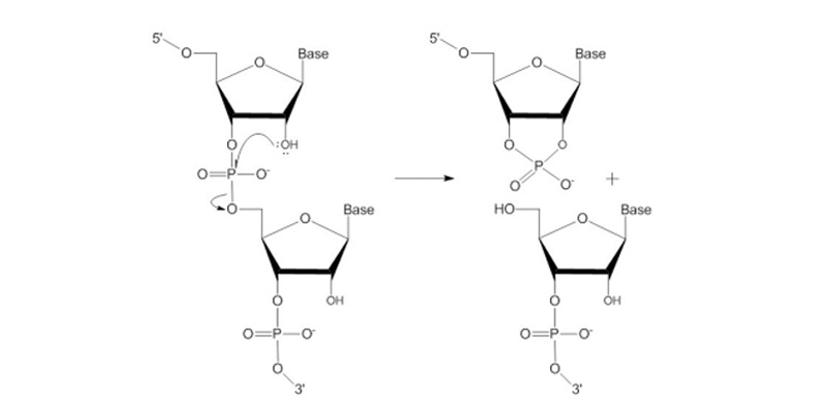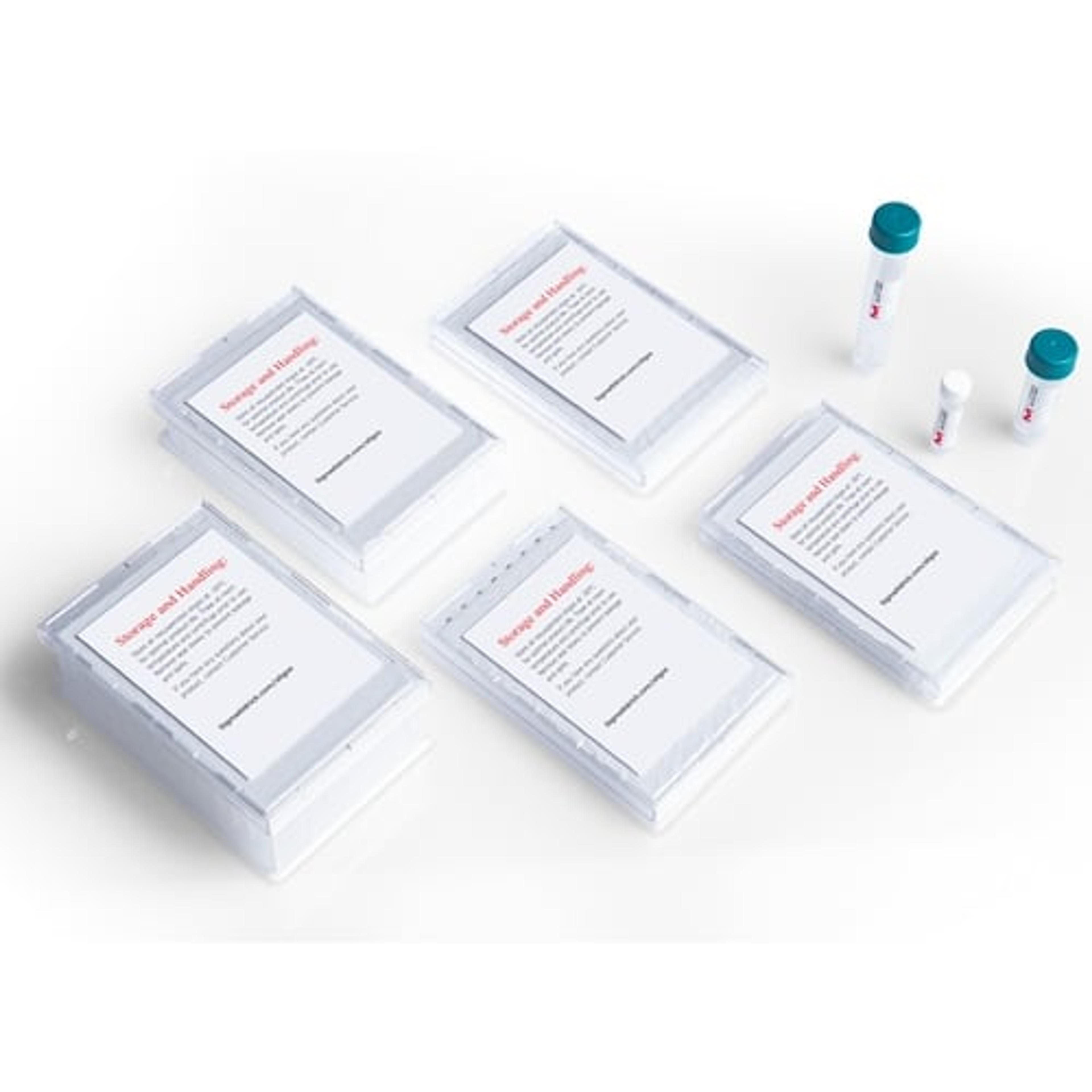Oligonucleotide handling and stability
Gain tips and tricks on oligonucleotide handling and stability to optimize your experiments and maximize shelf life
6 Feb 2023
DNA oligonucleotides are relatively stable molecules (Table 1). However, they require certain handling and storage techniques to ensure trouble-free experiments and maximize shelf life, respectively.
Table 1. Approximate shelf-life of non-modified, single-stranded DNA oligonucleotides with proper storage. These values are estimates and are not guaranteed.
Condition
Duration
-20 °C (freezer)
Stable for approximately 2 years, whether dry or in solution (water or TE buffer)
4 °C (refrigerator)
Stable for approximately 1 year, whether dry or in solution (water or TE buffer)
Room temperature
Stable for approximately 3 - 6 months, whether dry or in TE buffer
Hot day (non-temperature-controlled shipping or storage in warehouse)
Stable for approximately 1 - 2 months, whether dry or in TE buffer
Resuspension, storage, and working habits
Non-modified DNA
Resuspension. Unless requested to ship in solution, all single-stranded DNA oligonucleotides ship dry and are ready for use upon resuspension with the exception of thiol-modified sequences. Weak buffers, such as TE (10 mM Tris, pH 7.5 0 8.0, 1 mM EDTA) or Tris (10 mM Tris-HCl, pH 8.0) are preferred, with TE as the best choice. If TE is unsuitable for the end technique/application, then sterile, nuclease-free water is the second best choice.
Storage. As shown in Table 1, storage at -20 °C will provide the longest shelf life. TE buffer is the absolute best option as laboratory-grade water is often slightly acidic, which slowly degrades DNA. In addition, dry oligos are never truly dry. Some moisture always remains, which in turn leads to slow degradation. However, there is unlikely to be any significant difference in stability for at least 2 years whether stored dry, in water, or in buffer.
Non-modified RNA
Resuspension. Single-stranded RNA oligonucleotides should be resuspended as described above for non-modified DNA.
Storage. RNA is much more unstable than DNA due to its chemical structure. RNA is subject to autocatalysis (Figure 1) as well as degradation by RNases, which are abundant in laboratories due to their presence in sources such as sloughed-off skin cells and ubiquitous microorganisms.

For short-term storage, single-stranded RNA oligonucleotides should be stored in TE buffer at -80 °C. For the long-term, storage at -80 °C as an ethanol precipitate is the best option. Taking precautions to minimize exposure to RNases will increase shelf life.
Working with RNA. RNases often contain numerous disulfide bonds and therefore are very stable. Short of using harsh chemicals to eliminate these enzymes, they are resistant to common methods of decontamination, such autoclaving. The following precautions will help to minimize your RNA oligonucleotide to RNase exposure:
- Assume everything in your workspace / laboratory is contaminated with RNases
- Use an isolated part of the lab that is dedicated to working only with RNA
- Routinely clean the RNA-isolation area with agents that destroy RNases
- Use chemicals, reagents, and water that are certified as RNase free
- Use tools, such as micropipettes, that are for working only with RNA
- Always wear gloves and change them after touching other surfaces
Modified oligonucleotides
Resuspension. Modified oligonucleotides, whether DNA or RNA, should be resuspended in TE buffer. This is critical, especially for fluorescent moieties, because pH can have a big impact on the intensity of fluorescent emission.
Storage. Modified oligonucleotides should have stability profiles similar to those of their unmodified DNA and RNA counterparts. Therefore, they should be stored according to the above recommendations for DNA and RNA. To prevent photobleaching, fluorescently labeled oligonucleotides should be stored in the dark.
Working with fluorescent modifications. To prevent photobleaching when working with fluorescent moieties, keep them in their amber tubes or if transferred to clear tubes, wrap them in foil.
Duplex oligonucleotides
Merck's scientists have found siRNA duplexes to be stable for at least 3 years when stored dry at -20 °C. DNA duplexes should be just as stable, if not more so.
Single-use aliquots
While freeze / thaw cycles are believed to degrade genomic DNA, likely via shearing due to ice crystal formation1, the scientists at Merck have found that oligonucleotides are not negatively impacted by such cycles. However, dispensing oligonucleotides into single-use aliquots and then freezing them at -20 °C is still best practice. This prevents waste due to mishaps such as cross contamination or spills. For example, if you spill your single tube of oligonucleotide on the floor, you will have to reorder it. However, if you spill a single aliquot on the floor, you can simply thaw another tube.
Preparing solutions
Oligonucleotide quantity, found on both the tube label and technical datasheet, is provided in a variety of units, including optical density (OD), micrograms (µg; by extension, µg/OD), and nanomoles (nmol). Merck's quantification method begins with taking an absorbance reading at 260 nm in a UV/Vis spectrophotometer to provide an OD value — all other units are derived from this OD value. These units of quantity — nmol is the most useful — can be used directly to create stock solutions.
There are many units of concentration, but micromolar (µM) is probably the one most commonly used with oligonucleotides. Here, beginning with the already determined nmol quantity found on the tube label / technical datasheet, both longform and shortcut calculations needed to create a 100 µM stock solution as well as a 10 µM working solution will be provided as an example. For quicker results, including the calculation of the concentration in other units, please use the resuspension and dilution modules of the Merck online OligoEvaluator™ tool.
Example longform resuspension calculation
We prefer to work in base units to help prevent ‘conversion confusion’ during dimensional analysis. Making mistakes is easy to do when directly trying to convert between nmol, µM, and other sub-base units.
Step 1. Convert the number of nmol on the tube label / technical datasheet to moles.
Our hypothetical oligonucleotide arrives with a quantity of 49.9 nmol.
mol = 49.9 nmol x 1 mol 109 nmol-1
mol = 4.99 x 10-8
Step 2. Convert the desired stock solution concentration of 100 µM to molarity.
100 µM = 100 µmol L-1
M (mol L-1) = 100 µmol L-1 x 1 mol 106 µmol-1
M (mol L-1) = 1 x 10-4
Step 3. Use the desired stock solution concentration in molarity and the number of moles to calculate the volume in liters needed for resuspension.
1 x 10-4 mol L-1 = 4.99 x 10-8 mol
L = 4.99 x 10-8 mol / 1 x 10-4 mol
L = 4.99 x 10-4
Step 4. Convert liters to microliters (µL).
Volume = 4.99 x 10-4 L x 106 µL L-1
Volume = 499 µL
Example shortcut resuspension calculation
Step 1. Take the number of nmol from the tube label / technical datasheet and multiply by 10 to get the resuspension volume in microliters.
Volume = 49.9 nmol x 10
Volume = 499 µL
Note: This shortcut calculation only works for creating 100 µM solutions.
In this particular case, add 499 µL of water or buffer to the tube containing the oligonucleotide and then vortex to ensure adequate mixing.
Additional thoughts on resuspension
This above resuspension example used 100 µM because it is a typical laboratory stock solution concentration. Creating stock solutions with concentrations too far below 100 µM can be problematic because the volume needed for resuspension can easily exceed the 2 mL capacity of the tube. For example, to create a 20 µM stock solution, this particular oligonucleotide, which is present at 49.9 nmol, would need to have 2.49 mL of water or buffer added to it.
Likewise, trying to create a stock solution more concentrated that 100 µM can also be problematic. For example, to create a 1000 µM stock solution, this particular oligonucleotide would need 49.9 µL of water or buffer. This small volume can be challenging to pipette accurately from a 2 mL tube.
To create a 100 µM stock solution, calculations and online tools are actually unnecessary as the volume needed for resuspension is included on the technical datasheet.
Example working solution calculation
In this example, we will assume that the final 10 µM working solution is to be in a volume of 20 µL, which is typical for PCR.
Step 1. Use this concentration, volume equivalence formula.
C1V1 = C2V2
100 µM x V1 = 10 µM x 20 µL
V1 = 2 µL
In this particular case, add 2 µL of the stock solution to the reaction tube, and along with the other components, bring the final volume with water or buffer to 20 µL.
Quantity verification
Merck takes great care to ensure that its OD values are accurate. However, you may still want to verify the quantity of your oligonucleotide. In this case, if you have a traditional UV/Vis spectrophotometer, the method is simple.
Resuspend the oligonucleotide in 400 µL of water or buffer
Dilute 12 µL into 988 µL of sterile, nuclease-free water
Take an A260 reading of the 1 mL sample in a cuvette
Ensure the OD value is in the linear range (~0.1 to 1 OD)
Multiply the OD of the sample volume by the dilution factor
Total OD = OD of 1 mL sample
Multiple total OD by µg/OD (from technical datasheet) to get µg
Stability studies
Given that every oligonucleotide is custom, and therefore unique, it is impossible to provide a non-experimentally determined guarantee with regard to shelf life. The shelf-life estimates in Table 1 should work well for most researchers, though.
However, if you are developing an oligonucleotide-containing product for commercialization (life science research tools, molecular diagnostics, or laboratory developed tests), you may require an expiration date with a guarantee. In this case, we recommend a stability study. You can select either a real-time or accelerated project.
A real-time project involves waiting for the oligonucleotides to degrade naturally. Given that oligonucleotides are very stable, this would take longer (many years) than almost anyone is willing to wait and therefore is essentially a non-viable option. Therefore, we recommend an accelerated project, which often takes only 10 weeks.
Conclusion
Even with poor treatment, most single-stranded DNA oligonucleotides are stable enough to function well if they are used shortly after delivery. If additional help is needed, please consult Merck's technical services group at oligotechserv@sial.com.
To receive an experimentally-determined expiration date with a guarantee, please inquire about a stability study at dnaoligos@sial.com.
References
Röder B, Frühwirth K, Vogl C, Wagner M, & Rossmanith P (2010). Impact of Long-Term Storage on Stability of Standard DNA for Nucleic Acid-Based Methods. J Clin Microbiol, 48, 4260-4262.

